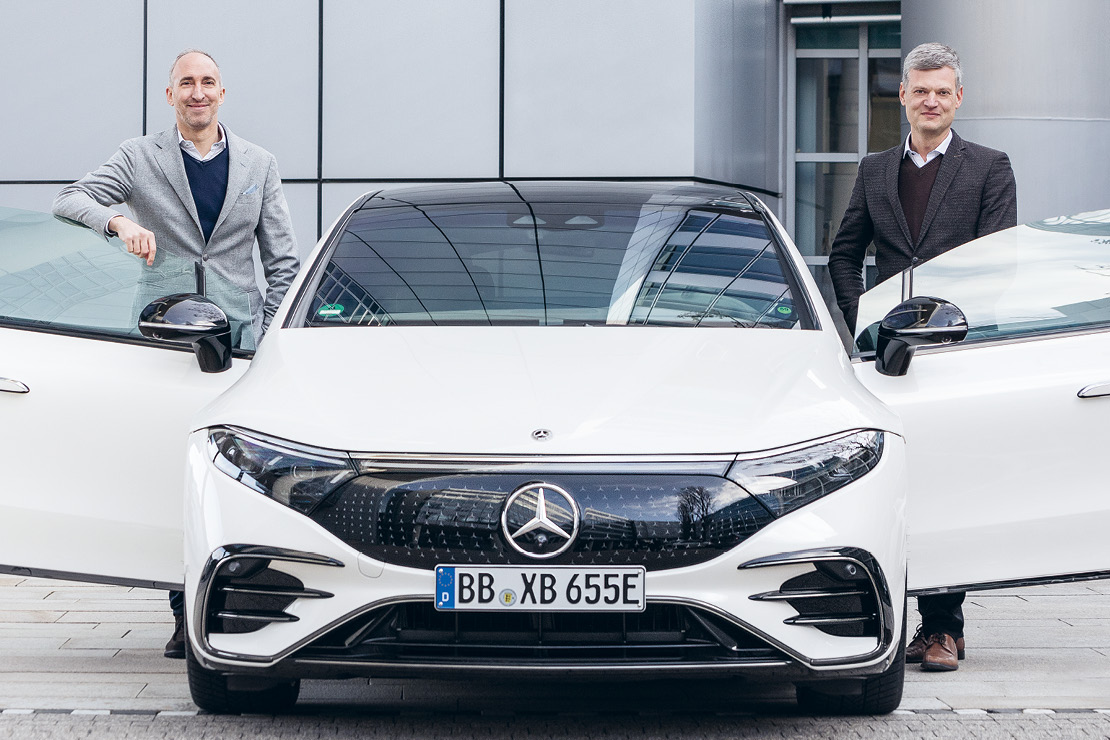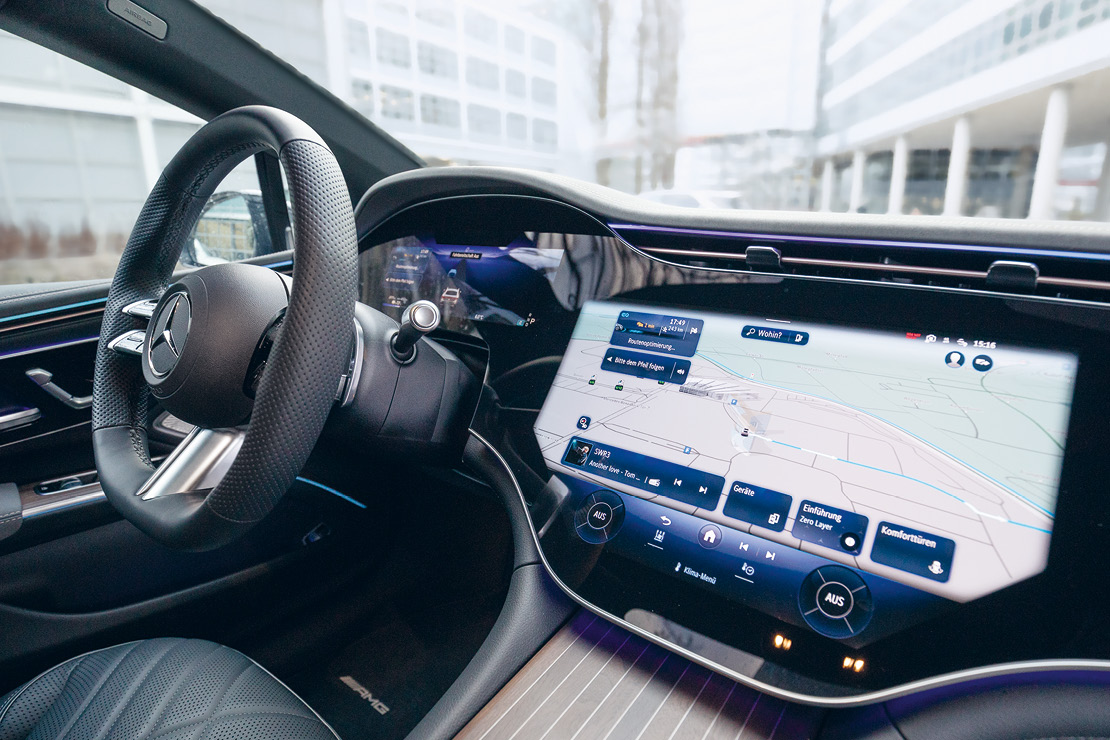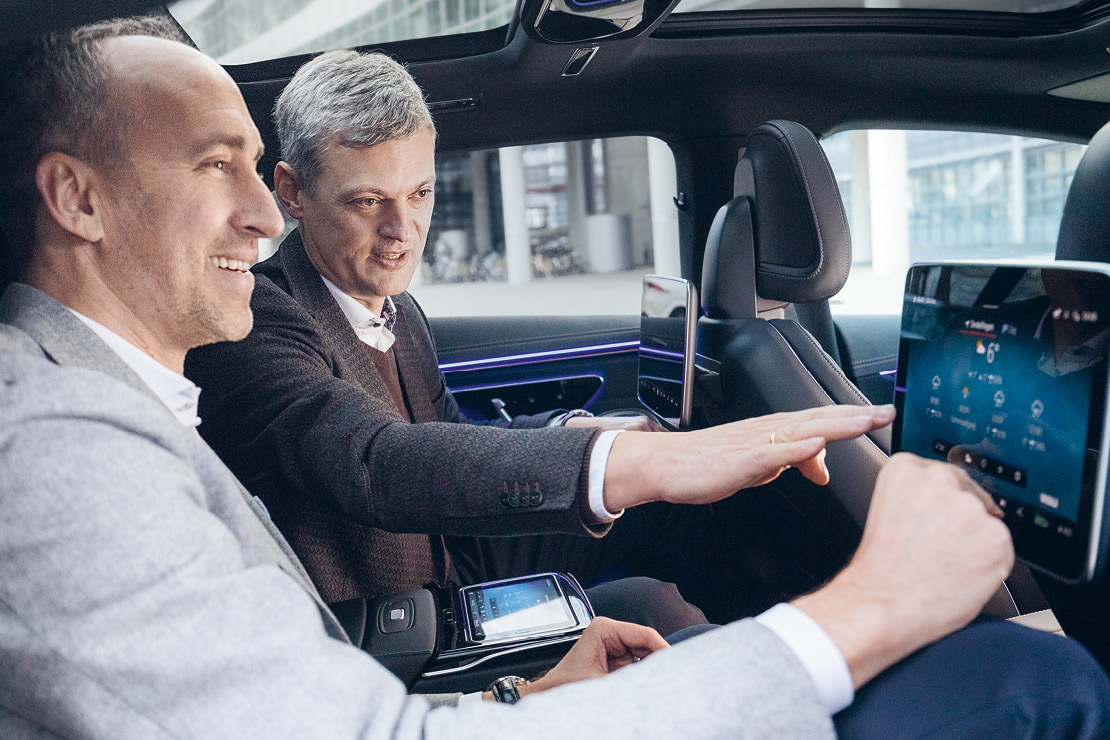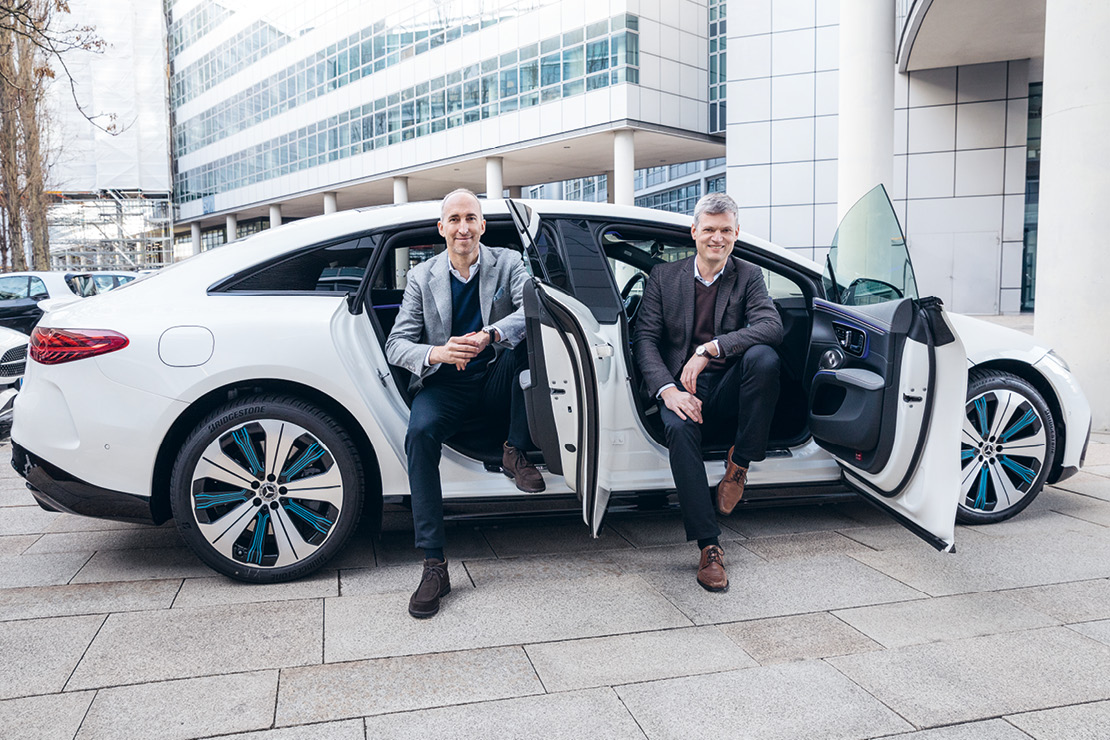
customer experience
In diaglog with Dr. Michael Hafner + Luz G. Mauch
In-vehicle connectivity, the presentation of information and content on displays, and the integration of apps are essential selling points. What demands does this place on you and your teams?
Michael Hafner New model generations must be fully connected. That’s why, from a technical point of view, we see every vehicle as an integral part of a vehicle cloud in broader stable IoT architecture. From the customer’s point of view, of course, the most important thing is what content is available in the car and how it remains up-to-date and attractive throughout the entire life of the vehicle. To ensure this, we think of vehicle software, connectivity and content holistically and across functions – from basic research and development to the coding of programs.
You’re alluding to the Electric Software Hub at the Mercedes Technology Center Sindelfingen …
Michael Hafner Exactly. Last year, we bundled numerous hardware, software, system integration and testing functions under one roof. Around 1,100 experts from 19 cross-functional departments work closely together. They develop software, use simulations for testing, and integrate hardware components step by step. The final step is the installation of in-vehicle prototypes. This approach is simultaneous engineering and seamless integration at its best – and we also draw on the expertise of partners like Luxoft.
We think about vehicle software, connectivity and content holistically and across functions – from basic research and development to coding the software scopes.
Dr. Michael Hafner
If you compare today’s tasks and customer expectations in the automotive UI / UX environment with those of ten years ago – what has changed the most in this period?
Luz Mauch The user experience in a car is good if the numerous systems can be operated intuitively and the journey is enriched – regardless of whether you are sitting behind the wheel or as a passenger in the back seat.
A crucial point here is that the relevant information must be shown on the display at precisely the right time and with an appropriate level of detail. The developments that we have worked on as an integration and software partner of Mercedes-Benz since 2015 across various MBUX generations show: On the one hand, you have to meet the expectations of everyday digital life defined by smartphones and tablets. On the other hand, it’s essential to avoid any distractions for the driver.
Personalization remains an important trend: No matter where we are in the world, we love to make our surroundings individual and distinctive. That’s why in cars, the settings for lighting, climate, infotainment and navigation, right through to driver assistance, should harmonize completely with personal taste.
A crucial point here is that the relevant information must be shown on the display at precisely the right time and with an appropriate level of detail.
Luz G. Mauch
Are there differences in how automotive luxury is perceived in different regions of the world? Do you need to have different software features in mind for Asia, Europe or the U.S. to ensure that your vehicles are widely accepted?
Michael Hafner Customer wishes remain different, and we see market-specific characteristics to which we naturally adapt. Take the messaging app WeChat in China, which more than 1.3 billion people use every month. It was logical for us to make the digital services related to Mercedes me available directly in this app. This use of WeChat allows Mercedes customers in China to check vehicle functions remotely and to conveniently personalize settings.
When it comes to navigation, we also see differences from country to country, both in terms of map material and providers. Many customers bring certain usage preferences from their smart devices, which we want to accommodate. However, we do not just build technically separate solutions for this but think in terms of global platforms in which we embed regional content. With our MB.OS operating system, which we developed in-house, we stay in control of the architecture of our system. MB.OS provides all the necessary programming interfaces that allow us to seamlessly integrate market-specific software modules.
The trend is clearly pointing toward cross-domain zonal architectures. As a result, in the future, we will see fewer but much more powerful vehicle computers and significantly fewer ECUs.
Luz G. Mauch
Computing power in cars is increasing rapidly – and with it the number of applications. What can be done on the development side to keep energy consumption in check and to use resources as efficiently as possible?
Luz Mauch Some architectures would undoubtedly look different if we could start developing vehicle software from scratch. In my opinion, we need to further decouple the engineering of hardware and software. Only if the two are strictly separated can systems and apps be kept up to date. At the same time, we are supporting the trend toward software-defined vehicles.
Thanks to our in-depth expertise in the embedded software environment, we know the requirements for the onboard E/E architecture and which applications and data can be easily outsourced to the cloud and, therefore, which are better left on board. The bottom line for me is that the continuous development of software must go hand in hand with continuous provisioning.
Michael Hafner With the Vision EQXX, Mercedes-Benz has shown how efficient, sustainable and luxurious electromobility will be in the future. The prototype got more than 1,200 kilometers on a single battery charge. This corresponds to an energy consumption of less than 10 kWh per 100 kilometers. The cd value, lightweight construction measures and battery innovations make this possible, as does vehicle software with optimized algorithms and routines that use little electricity.
How important are increasing levels of autonomy when driving, in order to be able to fully enjoy high-class infotainment with different offerings?
Luz Mauch For me, there is no question: The higher the level of autonomy of the vehicle, the more time there is for me as a driver to devote to other things. Developments like the DRIVE PILOT from Mercedes-Benz will give infotainment in the car another significant push. With the traffic jam assistant, drivers on the highway are already enabled to operate their smartphones or watch videos via the infotainment systemin accordance with the laws of the country they are in. In the future, it will be possible to conduct video calls thanks to an integrated camera.
Mercedes-Benz and Luxoft have become partners of the Eclipse Foundation. What importance do you both attach to open-source programs in the development of software-defined vehicles?
Michael Hafner For Mercedes-Benz, Free and Open Source Software is definitely an important topic. We see many opportunities for the entire automotive sector to adopt it to accelerate development toward emission-free and sustainable mobility. However, there is a give and take: On the one hand, we use open source in MB.OS, on the other hand, we were one of the first automotive manufacturers to provide the global developer community with a software development kit and make it easy to develop new services for Mercedes me.
Luz Mauch Luxoft’s partnership with Eclipse demonstrates our commitment to accelerating the separation of software and hardware development. Standardization and open source are powerful tools in addressing the growing complexity. In addition, as an active Software-Defined Vehicle working group member, we want to share resources and talents and drive innovation – from architecture design to the product planning process.
With the Vision EQXX, Mercedes-Benz has shown how efficient, sustainable and luxurious electromobility will be in the future. The prototype got more than 1,200 kilometers on a single battery charge.
Dr. Michael Hafner
Good software applications need a good E/E architecture. How can the number of interfaces be minimized, and the complexity of system integration be reduced?
Luz Mauch The trend is clearly pointing toward cross-domain zonal architectures. As a result, in the future, we will see fewer but much more powerful vehicle computers and significantly fewer Engine Control Units (ECUs). The decreasing number of ECUs will lower system complexity and increase operational safety and reliability.
Michael Hafner Stable interfaces are of fundamental importance. If every manufacturer defines their own solution, it will be difficult and lead to disproportionately more work for suppliers. Mercedes-Benz is, therefore, open to suggestions for definitions. However, we need uniform interfaces so that the complexity of the E/E architecture remains manageable.
Finally: The rollout date for MB.OS is coming ever closer with the launch of the second vehicle platform for e-models in 2024. Are your project lights all green?
Michael Hafner We are on track and will implement the project as planned. But of course, in projects of this size, it can happen that you need to catch up on one or two details. The important thing is that all the lights are green at the end – and that’s what we’re working on every day. I am convinced that our customers will be delighted.
Luz Mauch There are exciting moments with every Start Of Production (SOP), but we have proven time and again that we deliver. It will be the same with MB.OS.




